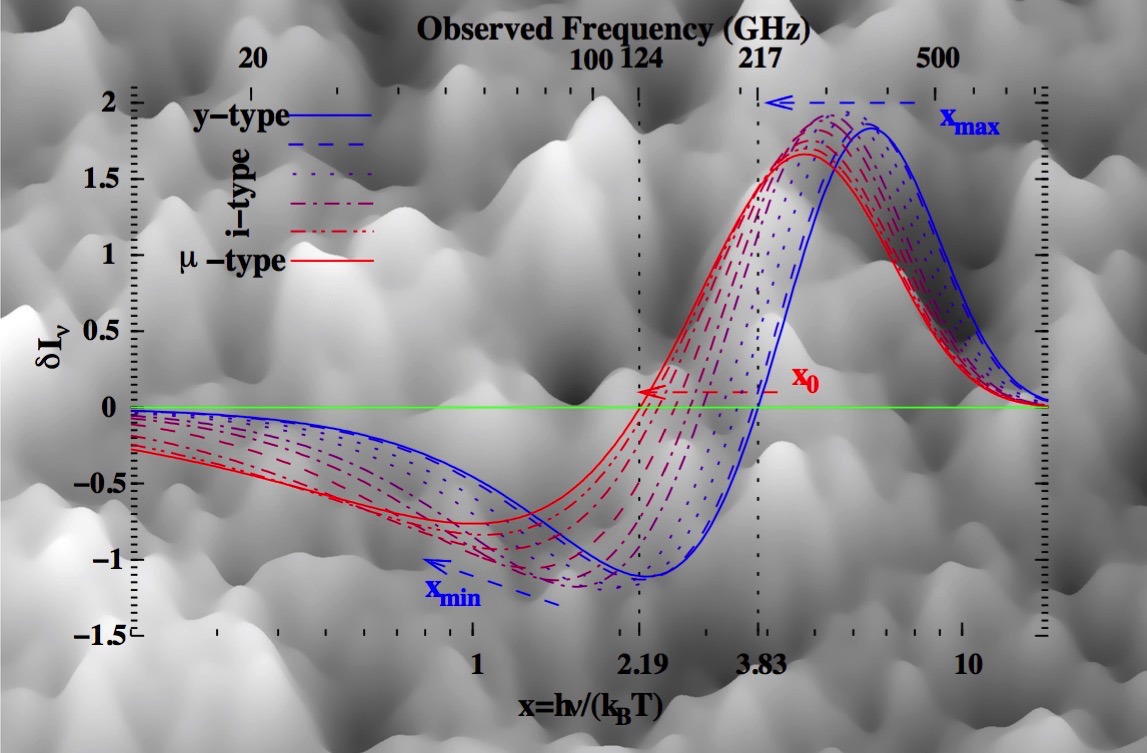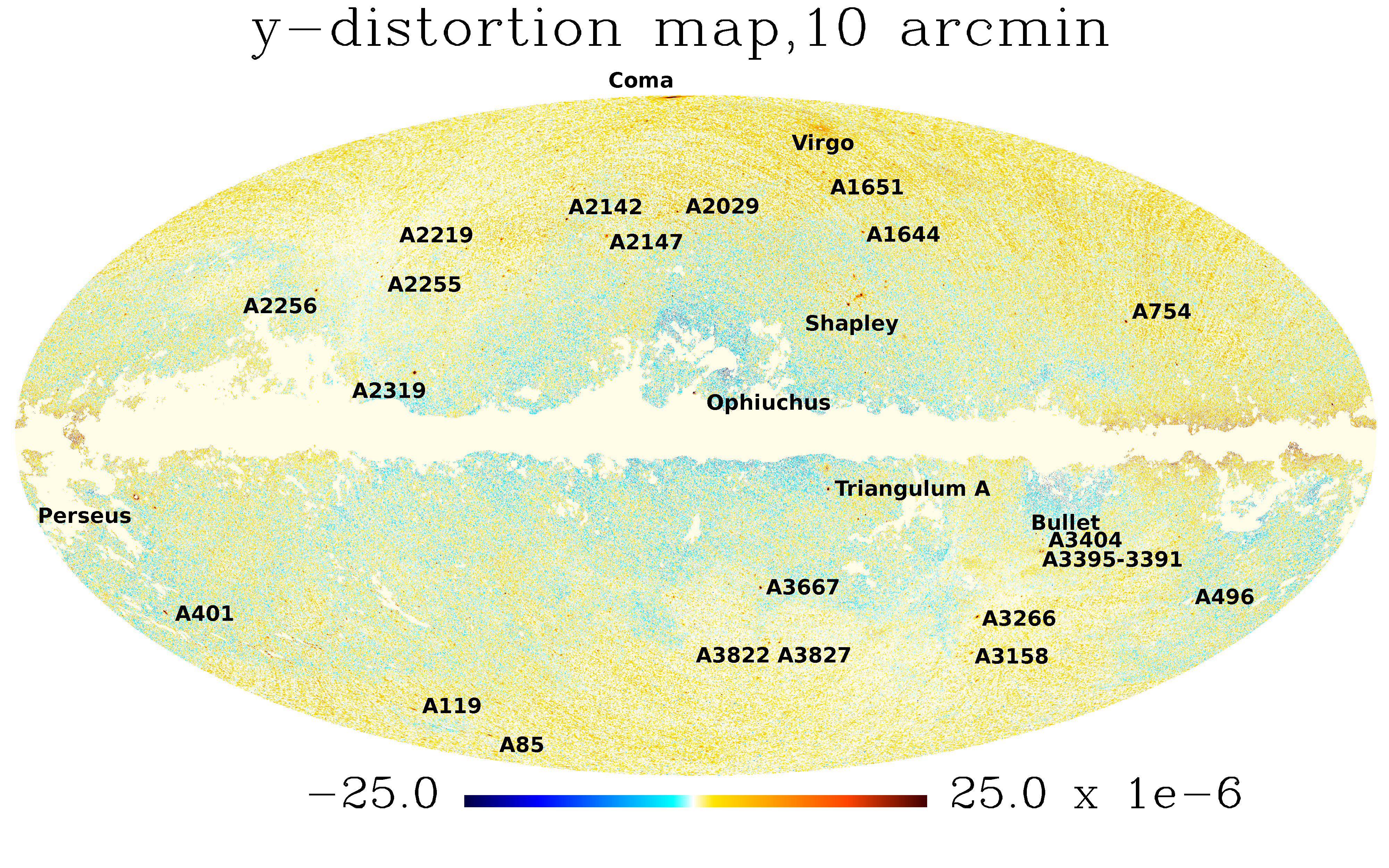Cosmology & Astroparticle Physics
Basudeb Dasgupta, Amol S. Dighe, Rishi Khatri, Subhabrata Majumdar, and Sandip P. Trivedi

Cosmic Microwave Background
The cosmic microwave background is the single richest source of cosmological information today. The "precision" in precision cosmology comes mostly from the cosmic microwave background data gathered by the space based (COBE, WMAP, Planck), ground based (SPT, ACT, BICEP/KECK, PolarBEAR and many more), and balloon based (Boomerang, SPIDER to name a few) experiments. We work on both the theoretical and observational aspects of the cosmic microwave background. On the theoretical side our work focuses on understanding the interaction between the matter and radiation throughout the history of the Universe, how this interaction imprints information in the cosmic microwave background anisotropies and in the deviations of the cosmic microwave background from a blackbody spectrum (the so called spectral distortions).
It is of course not enough to calculate theoretically the information hidden in the cosmic microwave background. The CMB experiments usually measure the total sky emission in a few rather broad frequency bands. The sky emission in each frequency band consists of the sum of emission from our own Galaxy as well as other galaxies, the so called foregrounds, in addition to the cosmic microwave background signal we are interested in. We develop new techniques to separate out the cosmological information from the foregrounds.
Dark Matter
Dark matter, which makes up about 26% of the energy density of the Universe today, is one of the biggest challenges in cosmology. The evidence gathered so far points to the existence of a new particle (or perhaps more than one) from beyond the standard model as the best explanation for the dark matter. This opens up the possibility to directly detect the dark matter in a lab experiment on earth, several of which are in progress around the world. The interpretation of the results of these experiments requires an accurate model of the dark matter density in the solar neighbourhood through which we are now passing. Modeling of the dark matter profile in our Galaxy is one of the aspects that we focus on. We also study how the exact properties of dark matter, such as its mass and its interaction with each other and with ordinary (baryons) matter affects the formation of galaxies and clusters of galaxies.
Dark Energy
Dark Energy is an even bigger mystery since we do not have any clue about its origin. The observations so far are consistent with it being a cosmological constant (Einstein's biggest blunder?). This explanation is of course quite boring. A much more interesting possibility is that it is dynamical: either a new fundamental particle e.g. a scalar field, or a modification of gravity from general relativity. We try to use the cosmological observations and publicly available data to try to find deviations from a cosmological constant.
Inflation
Inflation is considered by most cosmologists to be the best explanation for the origin of our Universe, in particular the small primordial fluctuations which gave rise to the galaxies, stars and us. There is now a plethora of models of inflation making the field quite confusing. We focus on understanding the inflation from general principles without confining to specific models.
Neutrino Astrophysics
The fact that "neutrinos have mass and oscillate" was the first experimental evidence of physics beyond the standard model. It is now accepted that they should play an important role in the supernova explosions. A non-zero neutrino mass also has important consequencies for the formation of the large scale structure. We study the role neutrinos play on different scales in the Universe, from exploding stars to the formation of the largest structures in the Universe.

Sunyaev-Zeldovich Effect
The Sunyaev-Zeldovich (SZ) effect, the name given to the up-scattering of the CMB photons by hot electrons in the clusters of galaxies, is an example of the CMB spectral distortion which has already been observed! In fact discovery of new clusters of galaxies by the CMB experiments (in particular Planck, SPT and ACT) has become almost routine. The SZ effect can be calibrated and used as a proxy to the cluster mass and therefore contains cosmological information. We use the SZ effect survey data to constrain cosmology as well as the internal dynamics and physics of the galaxy clusters.
Large Scale Structure
The Sunyaev Zeldovich effect mentioned above is only one of the probes of the large scale structure of the Universe. There are in fact numerous optical and x-ray surveys of galaxies and clusters of galaxies which contain much more information. In the near future there would be many new surveys, such as DESI, Euclid, eRosita, and LSST, which would create unprecedented amount of cosmologically useful data. We work on the theoretical understanding of the large scale structure as well as using the actual data from these large scale structure surveys, present and future, to dig out the information about the cosmological parameters.